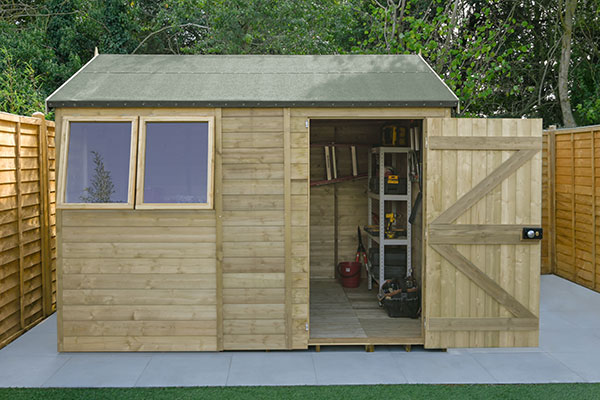
Here, in our final guide to shed cladding, we examine tongue and groove. We’ll explain how a tongue and groove joint is made, discuss its pros and cons as a method of building sheds, and then show you how it is used to make some of our other garden structures. Finally, we'll take a look at the history of tongue and groove joinery, along with its application in different areas of manufacturing.
What is Tongue and Groove Cladding?
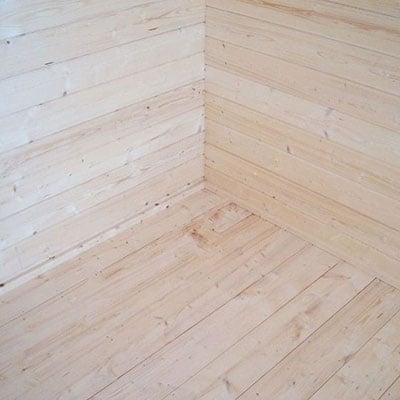

Tongue and groove (often abbreviated to T&G) is a method of seamlessly joining two or more wooden boards together to form a single flat surface. The boards can be positioned horizontally, vertically or diagonally, depending on the type of structure.
One edge of each board is designed with a thin, deep ridge, referred to as the ‘tongue’. This fits into a slot called the ‘groove’, which is cut along the edge of the adjacent board. The boards are then joined together via this tight, interlocking seal.
Unlike shiplap, which is constructed using a similar method, tongue and groove cladding does not have a scalloped profile. To the untrained eye, the face of interlocking tongue and groove boards is flatter, sleeker and neater, making for a more contemporary finish. This is because tongue and groove is designed with a far tighter interlocking fit than shiplap.
In keeping with this premium method of joinery, wooden tongue and groove cladding is invariably made from high-quality timber and rounded off with a smooth-planed finish.
It is the method used to construct our highest-quality sheds and other garden buildings.
Advantages of Tongue and Groove Sheds
As tongue and groove sheds tend to be more expensive than other models, it stands to reason that they enjoy a far greater number of pros than cons.
Strength and Durability
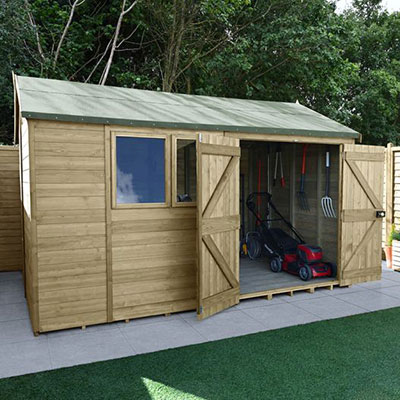

Most tongue and groove sheds have 12mm-thick walls, so they’re far more substantial than basic wooden sheds. Combine this with the quality of the materials used and the tightness of the interlocking seal, and it’s easy to see why tongue and groove sheds are exceptionally strong and durable.
As the boards are so snugly sealed together, there are no exposed edges of wood and nothing that might break off - just a flat, solid wall, which will withstand whatever life throws at it for decades to come.
Weatherproof Tongue and Groove Sheds
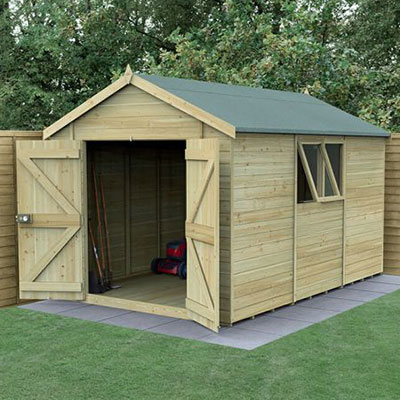

Tongue and groove’s tight, interlocking joints also mean there’s no chance of gaps developing between the boards, dramatically reducing the likelihood of water ingress.
Therefore, if you want to keep your stored items dry long-term, one of the best things you can do is buy a tongue and groove shed.
Draught-Proof Wooden Sheds
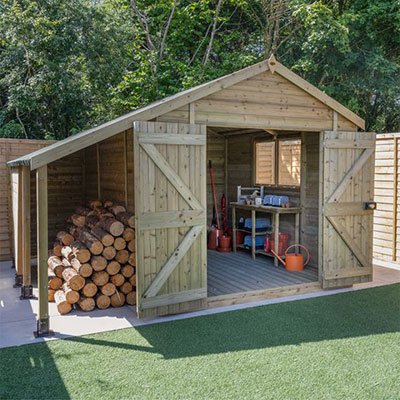

Tongue and groove joints are also the most effective at alleviating draughts, which is a particularly attractive selling point if you’re buying a large workshop shed, in which to carry out your practical tasks.
Choose Tongue and Groove Sheds for Higher Security
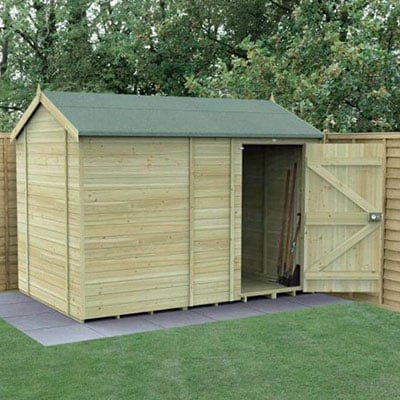

Tight, interlocking seals mean there are no exposed gaps for thieves to prize open, either, making for a more secure shed.
And as tongue and groove sheds are most manufacturers’ luxury models, you’re almost certain to get a superior door, locking system and glazing too.
Combine all these factors together and you can see why tongue and groove sheds are renowned for their high levels of security.
Tongue and Groove Shed Floors and Roofs
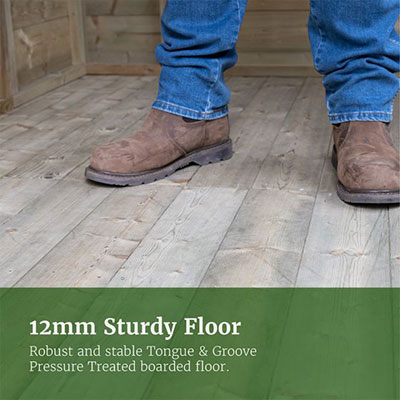

If tongue and groove joinery results in better shed walls, it’s only logical that it makes for better shed floors and roofs too.
Usually at least 12mm thick, a tongue and groove floor will easily accomodate heavier stored items and cope with constant footfall. The tightly-interlocking design also provides an effective barrier to ground moisture.
This last principle applies to the roof too. If you want a shed that keeps out the rain, the best place to start is by choosing one designed with a tongue and groove roof.
Stylish Tongue and Groove Sheds
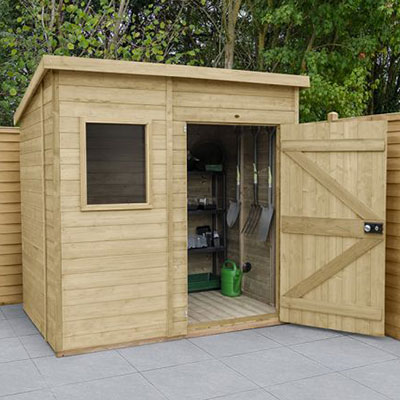

Thanks to their superior joinery technique, higher-quality timber and smooth-planed finish, tongue and groove sheds look smart, modern and stylish. Even a cursory glance at one of these wooden sheds tells you it’s a high-end model.
So, if you want the best possible shed for your garden, you know what to do – choose one that’s made using tongue and groove.
Disadvantages of Tongue and Groove
As tongue and groove sheds tend to be shed manufacturers’ flagship models, the pros will always outweigh the cons. The only potential downsides concern repairs and pricing.
With regards to the former, although a tongue and groove shed’s strength and durability mean it’s unlikely that you’ll experience any problems, if a repair to the joinery was ever required, it would be a difficult task for you to complete unless you possess advanced DIY skills.
In terms of pricing, it’s very much a case of getting what you pay for. If you want the best type of shed on the market, with all the benefits that go with it, you’ve got to be willing to pay a premium.
Forest Timberdale Tongue & Groove Sheds
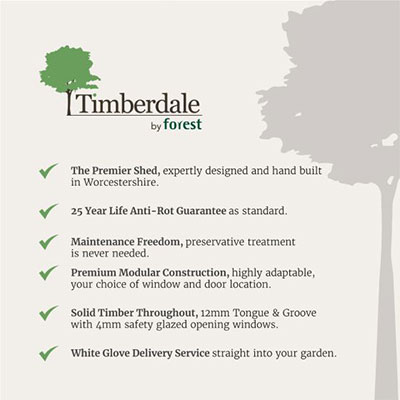

Knowing that tongue and groove is used to make the best wooden sheds, you might be wondering which is the finest tongue and groove shed of all. Well, we have no hesitation at all in telling you that accolade belongs to Forest’s range of Timberdale sheds.
Beautifully handcrafted in the heart of Worcestershire, these wooden sheds are pressure treated and backed by a market-leading 25-year anti-rot guarantee. Further treatment will never be required, saving you the time and money involved in retreating the wood, and giving you complete maintenance freedom.
A smart modular design means your shed is delivered in smaller sections of interchangeable panels but you get more overall wood. This results in an easier assembly, a choice of door/ window positions, and a much stronger shed.
Not only are a Timberdale shed’s walls constructed from premium 12mm tongue and groove, the floor and roof are too! The former includes pressure treated bearers to further reduce the risk of ground moisture, while the latter is fitted with a superior 140g reinforced-polyester mineral felt cover for unbeatable weatherproof protection.
These sheds really are brimming with high-end features. The framing is a whopping 66mm x 33mm, providing even greater strength and stability, while the ledged and braced doors feature exterior turn buttons, interior bolts and a key-operated lock to maximise security. The opening windows are top notch too. Made from 4mm toughened safety glass, they’re absolutely perfect for a busy, family-orientated garden.
So, if you’re in the market for a new garden shed and only the best will do, choose from all 46 designs and sizes of Forest Timberdale sheds right here.
And to see how tongue and groove sheds compare to other garden sheds, why not read our Shed Buying Guide?
More Tongue and Groove Garden Products
As mentioned at the start of this blog, tongue and groove joinery isn’t just used on sheds. We stock log cabins, summerhouses, garden offices, greenhouses and playhouses, which are built using this superior joinery technique.
Whether tongue and groove is used to construct the walls, floor and/ or roof of the garden building, as you’ve already seen, it is a hugely positive selling point.
Discover more about this in our log cabin, summerhouse, greenhouse and playhouse buying guides.
Tongue and Groove Fencing
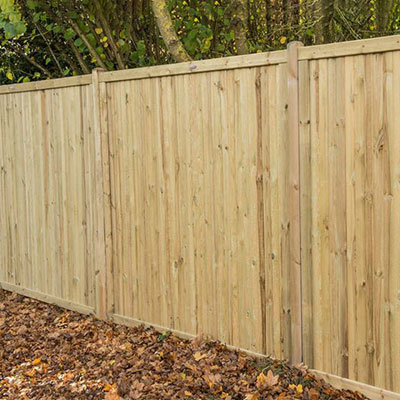

Tongue and groove also makes outstanding fence panels, the Forest 6' x 6' Acoustic Noise Reduction Fence Panel (1.83m x 1.80m) being a prime example.
Pressure treated and backed by a fantastic 15-year anti-rot guarantee, this garden fencing is constructed from extra-thick 17mm interlocking tongue and groove boards. With a 45mm rebated frame and sumptuous smooth-planed finish too, these premium fence panels really do boast both beauty and brawn.
What’s more, thanks to Triform Technology, these panels reflect, diffuse and absorb sound, resulting in an incredible 30dB noise reduction, so if you live near a school or busy road, this is the fencing for you.
And if you’re in any doubt about this claim, don’t be. These fence panels have been independently tested to British Standards BS EN 1793-2:2012 (road traffic noise reducing devices) Category B3, BS EN ISO 10140-2 and ISO 717-1, which is the method used for measuring airborne sound insulation.
A History of Tongue and Groove


The principle of tongue and groove is taken from dovetail joinery, which dates back to Ancient Egyptian times.
As you might expect, huge advances were later made during the Industrial Revolution, most notably in early 1800s America, where a water-powered machine was invented to manufacture superior wood floors. By the late nineteenth century, more advanced side matcher and end matcher machinery raised standards higher still, resulting in tongue and groove becoming the most popular way to build a home’s flooring during Britain’s Edwardian era.
Since this time, the tongue and groove technique has also been used on fine furniture joinery; to clad interior walls, including wainscoting; to produce Tongue Larssen metal sheet piles, used for coastal protection and flood barriers; and for building exterior cladding.
Tongue and Groove Exterior Cladding


Tongue and groove’s weathertight, aesthetically-pleasing design makes it a popular choice of cladding on both high-end residential and commercial buildings. What’s more, the strong bond between the boards allows it to be used horizontally, vertically or diagonally, making it an architect’s 'dream' form of cladding.
As the eye tends to follow the direction of the boards, a horizontal design is chosen to emphasise width, while a vertical design is used to accentuate height.
Tongue in Groove
Although the two joinery methods are similar, tongue in groove is not the same as tongue and groove. The former features a completely separate tongue, which is fitted into identical grooves found on each adjoining board. This type of joinery is sometimes referred to as ‘slip tongue’.
Further Information About Wooden Cladding


Once again, we’d like to recommend Forest’s Guide to Our Products as an excellent source of information on cladding and other garden-product terminology.
For further reading on cladding in architecture and construction, download Timber Development UK’s Timber Cladding Handbook.
And if you have any questions at all about the tongue and groove used to make our garden-based products, please don’t hesitate to contact our UK-based Customer Service Team, who will be delighted to assist you in any way they can.




